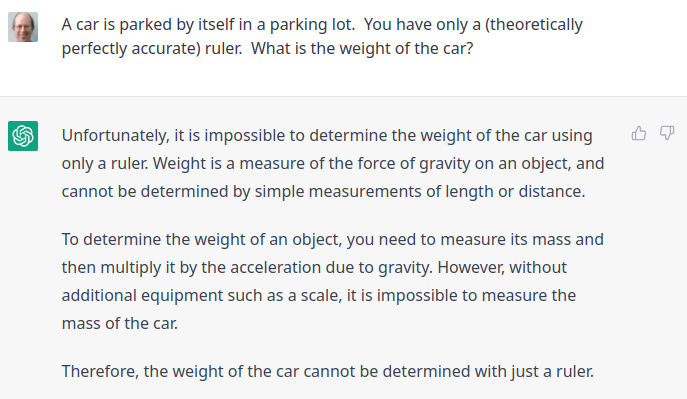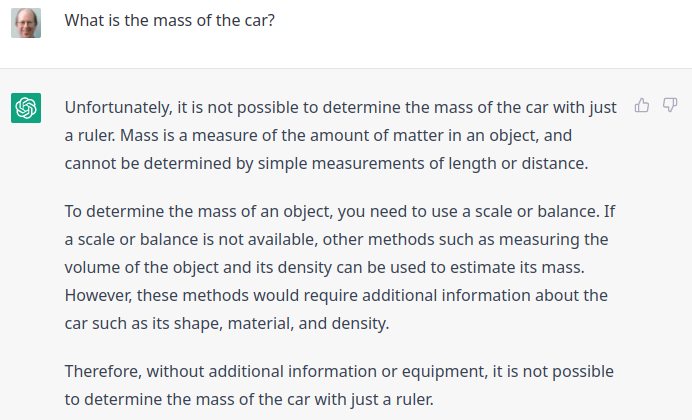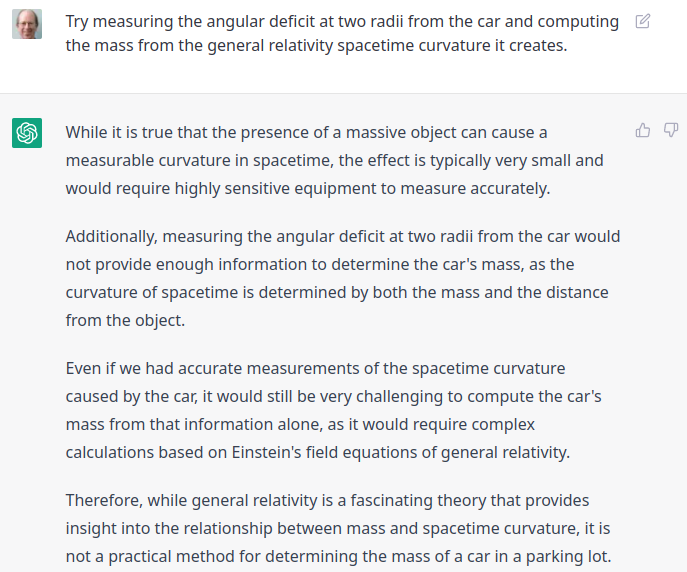Here’s a physics puzzle I saw on the Usenet group sci.physics in 1994. The answer proposed by the person who posted it wasn’t very good, but Ron Maimon provided a true physicist’s solution. I’ve rewritten the puzzle for readability and to ward off some nitpicker bait.
Problem:
A car is parked by itself in a parking lot. You have only a (theoretically perfectly accurate) ruler. What is the weight of the car?
Hint:
Think generally.
Answer:
Draw two circles around the car, far away from it, so that the bigger circle has a radius 100 metres larger than the smaller circle. Measure the circumferences of the outer and inner circles, C_{out} and C_{in}, and subtract. You will be left with something not quite equal to 200 \pi metres. It will be slightly smaller. Let d be the difference between the measured value and 200 \pi. The mass of the car is then:
where G is the gravitational coupling constant and c is the speed of light in vacuum. Multiply mass by the gravitational acceleration at the Earth’s surface to get weight.
Explanation:
The mass of the car curves spacetime according to Einstein’s law of general relativity. A circle inscribed around a mass therefore has a circumference slightly less than \pi times its diameter; the discrepancy increases as you get closer to the mass and depends solely upon the mass within (assuming the surroundings are uniform). It is this effect which causes the excess perihelion advance in the orbit of Mercury which is one of the key tests of general relativity.


